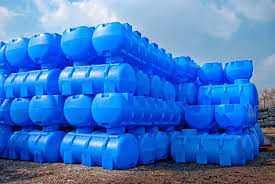Rotational molding, often known as rotomolding is a flexible and effective manufacturing process used to create hollow plastic products. This technique is popular for producing a wide range of products, from huge vessels and tanks to elaborate toys and automobile components. This is a complete overview of the process, its advantages, and the uses.
The Rotational Molding Process
Rotational Molding is the process of heating up a plastic material in a hollow mold and then turning the mold around several directions. The process starts with the introduction of a certain amount of plastic powder or liquid resin inside the mold. It is shut and heated, usually in an oven. The temperature increases and the plastic melts and bonds to the mold’s internal surfaces.
The mold’s rotation makes sure that the plastic material evenly coats the entire surface of the mold, creating a uniform wall thickness. After heating, the mold is usually cooled with water or air, which solidifies the plastic. After cooling, the mold is opened and the product that has been created is taken away. This process allows for intricate forms and smooth finishes typically requiring only little post-production work.
Advantages of Rotational Molding
Design Flexibility: Rotational molding is ideal to create intricate and complex designs that could be expensive or difficult to create using other techniques. It can create parts with different wall thicknesses, intricate geometries and integrated features like the handles or ribs.
Durability: Products produced by Rotomolding are recognized for their durability and strength. The even distribution of plastic within the mold results in a smooth, stress-free design that is able to withstand the harshest conditions.
Cost-Effectiveness: Compared with other manufacturing processes such as injection molding, the rotomolding process can be often more cost-effective for producing large hollow parts particularly in medium to low production runs. The molds used in rotomolding are typically cheaper and easier to manufacture.
Productivity: This process allows the use of a variety of plastics such as polypropylene, polyethylene, and nylon. Additionally, because the plastic melts before cooling to a minimum, there is a minimal amount of loss of material compared to other methods.
Applications of Rotational Molding
Rotational molding is used in different industries because of its versatility. In the industrial industry it’s utilized to make large tanks for storage as well as chemical containers and playground equipment. In the automobile industry, rotomolding creates parts like bumpers and panels. It’s also a common feature in consumer products, such as kayaks, coolers as well as outdoor furniture.
In the end it is a durable and flexible manufacturing method which has many advantages in making high-quality, durable and complex plastic products. Its ability to handle diverse types of materials and designs is a major advantage in many industrial and consumer applications.
